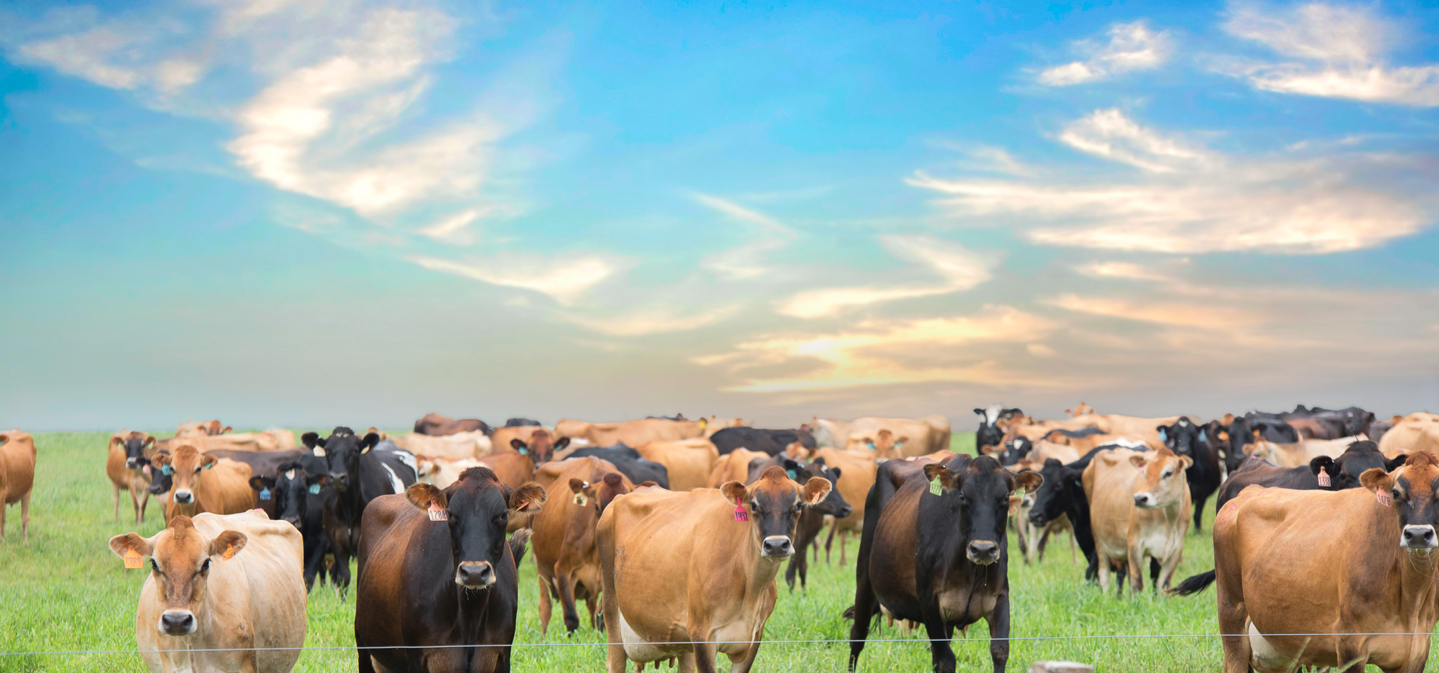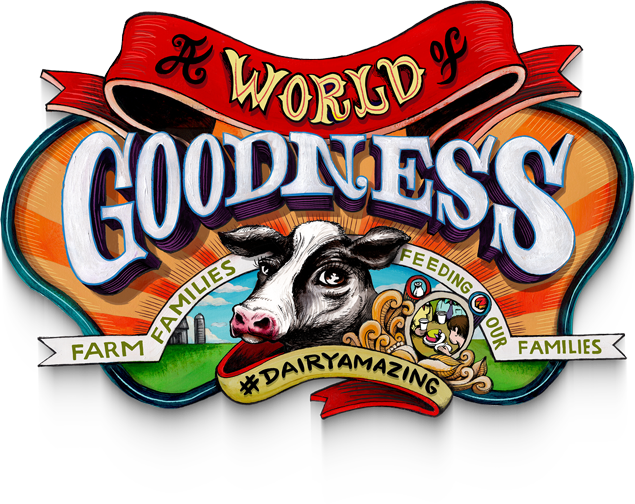Cows Turn Plants Into Milk
Cows have special stomachs with four compartments that allow them to digest plants that humans can’t, like hay and grass. The cows naturally transform those plants into milk.
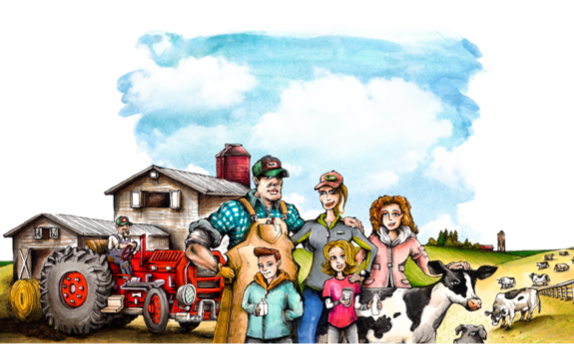
Caring for Cows & the Environment
Cows are the center of the dairy farm, so dairy farmers work 365 days a year making sure the cows are comfortable, with nutritious food (about 100 pounds per day) and clean water (about a bathtub full per day), as well as comfortable bedding and regular veterinary care. Dairy farmers also want the land to stay healthy for themselves and their children. Farmers recycle the cows’ manure as fertilizer for crops and reuse water multiple times, using it to cool the milk, wash the barn and irrigate crops.
![]()
Milking
Cows need to be milked two or three times a day. Milking machines provide a light suction that pulsates to gently allow the milk to release. It's a relief for cows to empty their udders, so they often line up on their own to have their udders cleaned and milked!
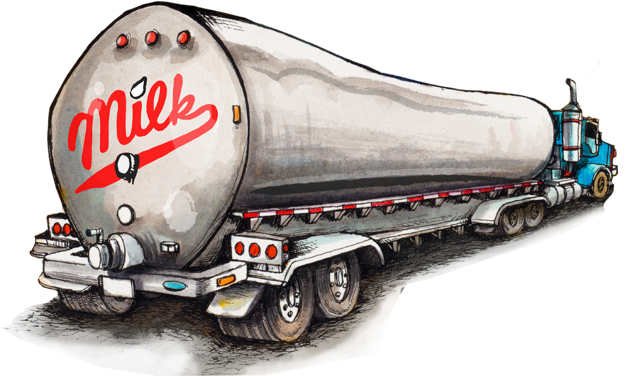
Cooling & Transportation
Milk comes out of the cows at about 100 degrees Fahrenheit, then goes into large steel tanks and is cooled very quickly – within two hours – down to 38 degrees or less. Quick cooling minimizes growth of any bacteria. The milk also gets tested to ensure it’s safe, then goes into insulated tanker trucks to be transported to a processing plant.
![]()
Processing & Packaging
At the processing plant, the milk is tested again for safety, then pasteurized (heat-treated to eliminate any harmful bacteria and quickly re-cooled). The milk can then make all sorts of dairy products:
- Milk coagulation is the process that turns milk into cheese (including cottage cheese).
- To make yogurt, milk undergoes the fermentation process.
- Fat that naturally rises to the top of the milk can be skimmed off by using a separator and packaged as cream or churned into butter. The fat-free milk underneath is known as skim milk.
- To make whole milk or lower fat milks, the processor will use homogenizing equipment to evenly mix the fat throughout the milk, so it doesn’t separate again.
- Processors can create lactose-free milk for people with lactose intolerance by adding an ingredient called lactase to break down the lactose (sugar).
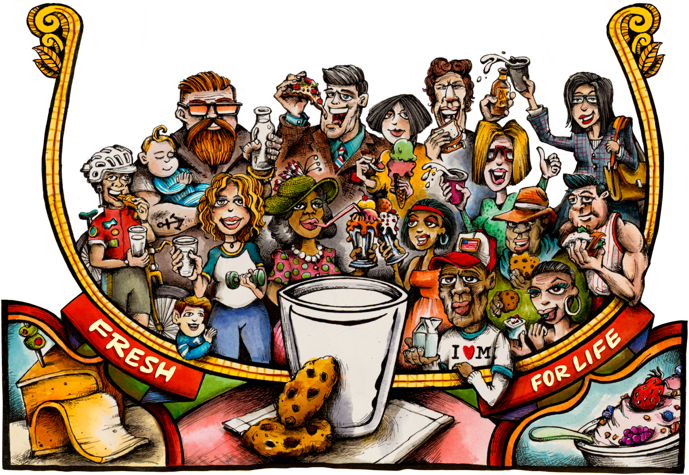
The Store & Your Fridge
Once the milk is packed in cartons or jugs, it heads to the grocery store in a refrigerated truck. All in all, it only takes about two days for the milk to get from the cow to the store, and it’s tested multiple times along the way, so it’s always fresh and safe when it gets to you.
Dietitians recommend you eat or drink three servings of dairy every day for important nutrients like protein and calcium.
Learn More

